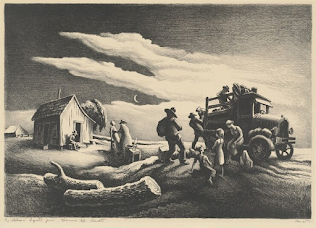Nihonga "Japanese Painting"
Nihonga
Nihonga translates to "Japanese painting." The term was originated to distinguished differences between Japanese art from nonwestern style paintings. Nihonga began in the Meji period in 1880's through modern time. Nihonga was in response to the Meji period when the government became centralized by the emperor and not allowing people to pursue opportunities. The materials that are used are Japanese paper known as "washi" made from native paints and animal glue as adhesive for pigments. Okakura Tenshin and Ernest Fenollosa created Nihonga in 1889 it had a very big impact on Tokyo School of Fine Arts.
Crow and Willow Tree, (1887)Kwanabe Kyosai
The artwork is titled Crow and Willow Tree it was created by Kwanabe Kyosai on 1887 in Japan. In Japan the willow tree represents November and the crow represents guidance, good luck and gratitude. This artwork represents Japanese culture because we can see that it is Nihonga artwork. The brush strokes stand out to me because it almost fades away at the ending of the wings almost making it look realistic. Another thing that stands out to me is the position of the branch at the bottom of the crow I can see the spacing between the branch and crow. One last thing that stands out to me is the texture of the artwork making it look like there is white on the wings.
Feathered Snow, (1944) Shoen Uemura

DRAGON AGAINST TIGER, (1899) Hashimoto Gaho
“Nihonga Movement Overview.” The Art Story, https://www.theartstory.org/movement/nihonga/.
Japanese Kawanabe Kyōsai 河鍋暁斎. “Kawanabe Kyōsai 河鍋暁斎: Crow and Willow Tree: Japan: Meiji Period (1868–1912).” The Metropolitan Museum of Art, 1 Nov. 1887, https://www.metmuseum.org/art/collection/search/54642.
Sandrey, Diccon. “Nihonga: 12 Must-See Masterpieces of Japanese Painting.” Japan Objects, Japan Objects, 1 Dec. 2022, https://japanobjects.com/features/nihonga#:~:text=Who%20created%20Nihonga%3F&text=Most%20histories%20of%20Nihonga%20will,some%20principles%20for%20the%20former.


It was super interesting to learn about the history behind the word Nihonga. I also really enjoyed examining the three distinct works that adhere to this particular artistic style. The piece that appealed to me the most was Feathered Snow. The subtle snowflake additions are striking and the soft texture makes it distinct. Just as you pointed out, I really like the traditional clothing that the figures are wearing.
ReplyDeleteI thought it was great how the other two paintings focused on animals. Especially in Gaho’s work, the symbolic nature of animals adds an even deeper meaning to the overall piece. If you want to take a closer look at Japanese art, you should definitely look at The Spirit of Japan by Yokoyama Taikan. It is a landscape painting that features a beautiful mountaintop. While the palette is more muted and minimal, the painting itself is breathtaking. Thank you for sharing these wonderful pieces!
Hi Michelle, I really enjoyed your blog post! Something that really appealed to me in the works presented is the brush strokes in "Crow and Willow Tree." The fades at the end make the feathers look super clean and realistic. A common theme I see in this pieces of art is mysteriousness, seen in all the backgrounds the majority is a blank paper not showing the exact whereabouts of the photo which is a little weird but creates a lingering energy of curiosity. It is very interesting to me that the word Nihonga means "Japanese Painting" very cool to understand why this blog post is called that. I really enjoyed your blog post Michelle!
ReplyDelete